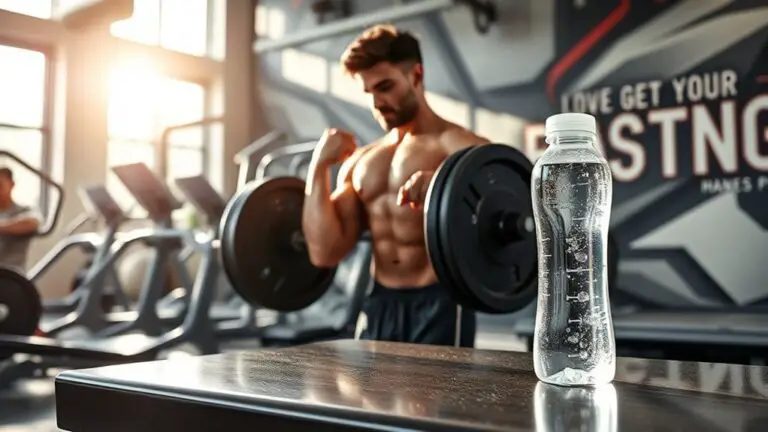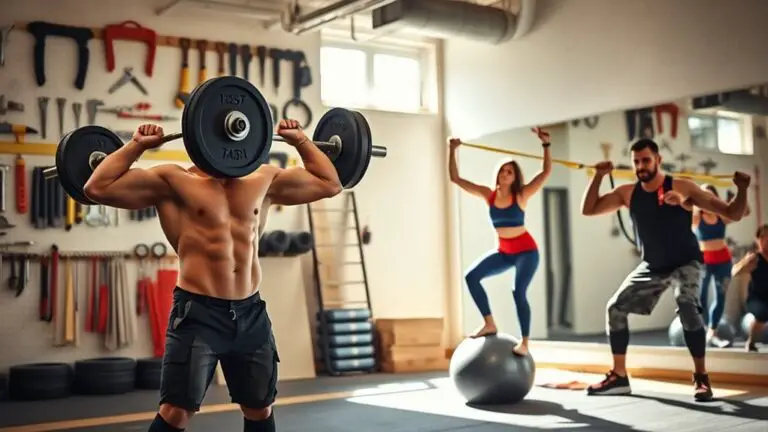The Best Gym Shoes for Preventing Injuries
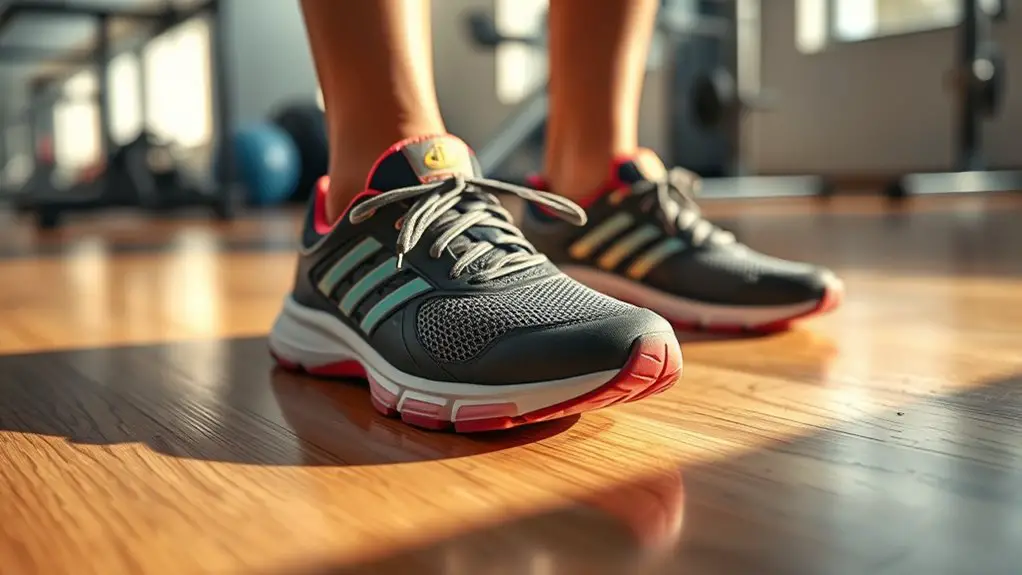
Choosing gym shoes that prioritize comfort and support is essential for preventing injuries. Look for shoes with adequate cushioning, stability, and traction to enhance your performance and minimize risks. Running shoes should offer responsive midsole cushioning and arch support, while cross-training shoes need flexibility for varied workouts. Weightlifting shoes require a firm, flat sole for stability. Understanding these key features helps you make an informed decision. Explore more options to find the perfect fit for your workouts.
Understanding the Importance of Proper Footwear
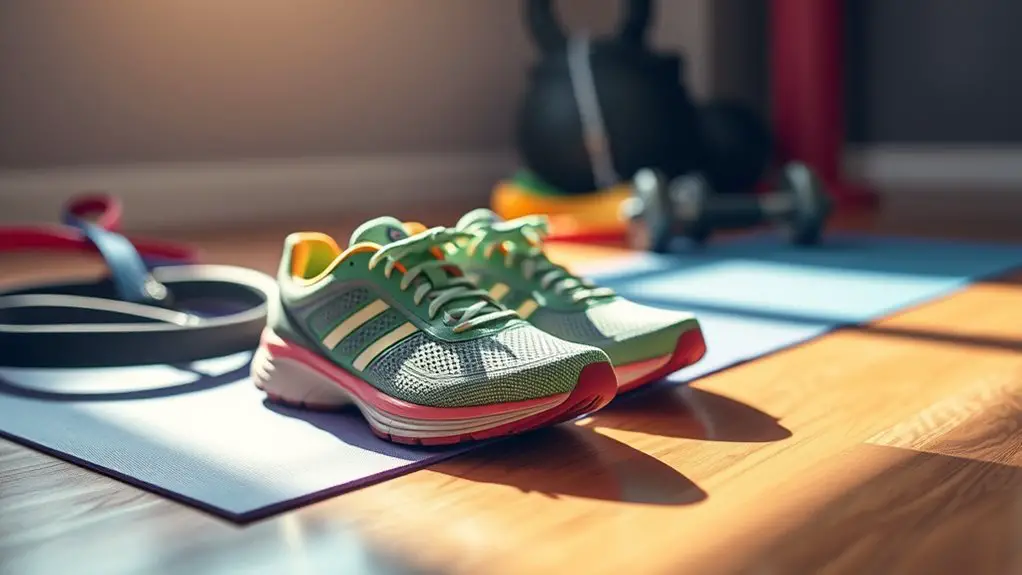
When you consider the physical demands of your workouts, it’s clear that proper footwear isn’t just a luxury—it’s vital. The right shoes not only enhance your performance but play a key role in injury prevention. Advanced footwear technology, such as cushioning systems and stability features, considerably impacts how your body absorbs shock and distributes weight during various exercises.
Without adequate support, you’re susceptible to strains, sprains, and other injuries that can sideline your fitness goals. The biomechanics of your movement are influenced by your choice of shoes; they should align with your foot type and workout style. Neglecting this aspect can lead to long-term damage, affecting your overall training regimen. Investing in high-quality gym shoes tailored to your specific activities can mitigate injury risks and promote a more effective workout experience. Prioritizing proper footwear is a proactive step toward safeguarding your physical health and enhancing your performance.
Key Features to Look for in Gym Shoes
When selecting gym shoes, it’s essential to focus on specific features that enhance performance and reduce injury risk. Look for adequate cushioning support to absorb impact, stability and traction for secure footing, and breathable material design to keep your feet comfortable during intense workouts. Prioritizing these elements will greatly improve your gym experience and safeguard against potential injuries.
Adequate Cushioning Support
Although many people underestimate the importance of adequate cushioning support in gym shoes, it plays a crucial role in preventing injuries during workouts. The right cushioning technologies enhance impact absorption, reducing stress on your joints. When selecting gym shoes, consider these key features:
- Shock-absorbing materials: Look for shoes with advanced foams or gel inserts that effectively dampen impact.
- Responsive cushioning: Choose options that not only absorb shock but also provide energy return, enhancing performance.
- Fit and flexibility: Make sure the cushioning adapts to your foot’s movement while maintaining a snug fit to prevent slippage.
Stability and Traction
To maximize your performance and minimize the risk of injuries, stability and traction are essential features to take into account in gym shoes. Look for shoes that incorporate advanced traction techniques, such as rubber outsoles with multidirectional patterns. This design enhances grip during dynamic movements, preventing slips and falls. Additionally, opt for footwear that supports stability exercises, providing adequate lateral support for your ankles and arches. A stable base is vital when performing weightlifting or agility drills, as it helps maintain proper form and balance. Shoes with a firm heel counter and a wide toe box can greatly improve your overall stability. Prioritizing these features will enable you to train effectively while reducing the likelihood of injuries.
Breathable Material Design
After ensuring stability and traction in your gym shoes, the next aspect to evaluate is breathable material design. A shoe with effective breathable technology helps regulate temperature and promotes moisture management, preventing discomfort during workouts. Here are three key features to look for:
- Mesh Uppers: Look for shoes with mesh uppers that enhance airflow, keeping your feet cool.
- Moisture-Wicking Linings: Select shoes that incorporate moisture-wicking materials to draw sweat away from your skin, reducing the risk of blisters.
- Ventilation Ports: Consider shoes equipped with ventilation ports that allow for additional breathability, ensuring ideal comfort during intense activities.
Investing in gym shoes with these features can greatly reduce the risk of injuries and enhance your overall performance.
Top Running Shoes for Injury Prevention
When selecting running shoes for injury prevention, it’s essential to focus on cushioning and support features that absorb impact and stabilize your foot. Additionally, ensuring a proper fit and adequate stability can greatly reduce the risk of common running injuries. By prioritizing these elements, you can enhance your running experience while protecting your body.
Cushioning and Support Features
Cushioning and support features are critical components of running shoes designed to prevent injuries. Selecting the right cushion types and support systems can greatly enhance your running experience. Here are three key features to take into account:
- Midsole Cushioning: Look for shoes with responsive foam or gel technology that absorbs impact effectively, reducing stress on your joints.
- Arch Support: Verify the shoe provides adequate arch support tailored to your foot type. This helps maintain proper alignment while running.
- Heel Counter Stability: A firm heel counter aids in controlling excessive foot movement, promoting a more stable gait.
Fit and Stability Considerations
Selecting shoes with proper cushioning and support is only part of the equation for preventing injuries; fit and stability play equally important roles. A shoe’s fit types—narrow, standard, or wide—should match your foot shape to guarantee comfort and reduce friction, which can lead to blisters and other injuries. Additionally, consider the stability levels of your chosen footwear. Shoes designed for pronators offer more arch support, while neutral shoes cater to those with a natural gait. Confirming a snug fit around the heel and a bit of room in the toe box will enhance overall stability. Remember, the right combination of fit and stability not only improves performance but also greatly reduces your risk of injury during workouts.
Best Cross-Training Shoes for Versatile Workouts
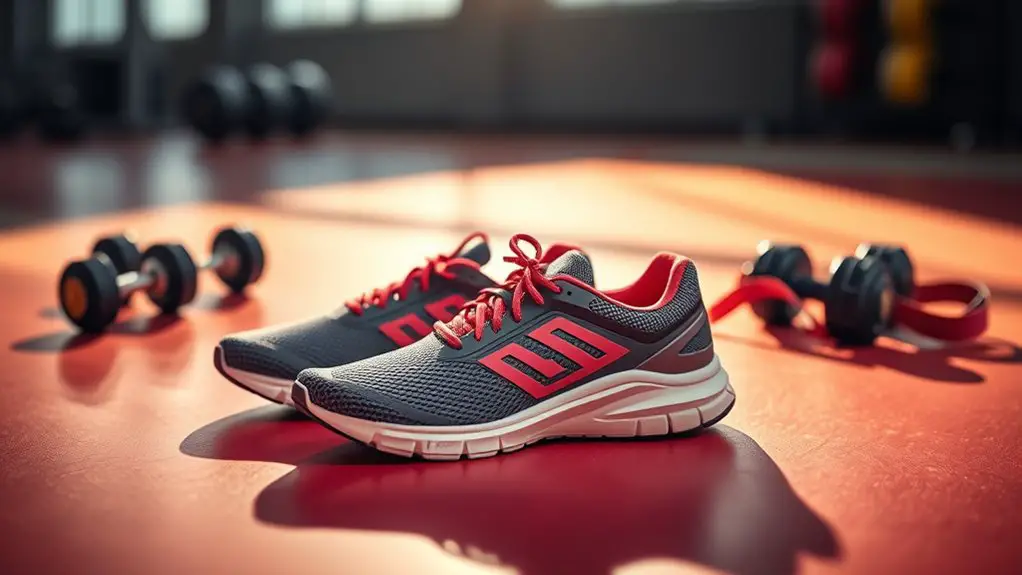
Versatile workouts demand footwear that can seamlessly shift between various activities, and cross-training shoes fit the bill perfectly. These shoes offer significant cross training benefits, enhancing your workout versatility while reducing the risk of injury. When selecting the best cross-training shoes, consider these key features:
- Supportive Cushioning: For comfort during high-impact activities.
- Stability and Grip: Essential for agility and lateral movements.
- Durable Construction: Guarantees longevity for varied workout environments.
The right cross-training shoes will provide the necessary support for everything from running to weightlifting and circuit training. With the ability to adapt to multiple workouts, you’ll find that investing in a quality pair not only enhances performance but also helps prevent injuries. Your feet deserve shoes that can keep up with your fitness journey, making cross-training shoes an essential part of your gym gear.
Ideal Weightlifting Shoes to Enhance Stability
When selecting weightlifting shoes, the sole design is essential for providing the stability you need during heavy lifts. A firm, flat sole minimizes foot movement and enhances your balance, while adequate ankle support reduces the risk of injury. Understanding these features can greatly improve your lifting performance and overall safety.
Sole Design Features
While many factors contribute to effective weightlifting, the sole design of your shoes plays an essential role in enhancing stability. To optimize your lifting performance, consider the following features:
- Sole Flexibility: A balanced amount of flexibility allows for natural foot movement while maintaining support during lifts.
- Outsole Grip: A high-traction outsole guarantees maximum grip on the gym floor, preventing slips and enhancing stability while you lift heavy.
- Firm Midsole: A rigid midsole aids in weight distribution, allowing for better stability during your lifts.
Ankle Support Importance
Ankle support is essential for maintaining stability and preventing injuries during weightlifting. When you lift heavy weights, your ankles are under considerable stress, and adequate support can help guarantee ankle stability. High-top shoes or those with reinforced ankle collars can provide the necessary support to keep your ankles aligned and stable, reducing the risk of sprains or other injuries. Additionally, good ankle support allows you to focus on your form and technique, which is vital for effective lifting. Shoes designed specifically for weightlifting often incorporate features that enhance stability, such as a firm heel and a wide base. Prioritizing ankle support in your footwear can considerably contribute to your overall performance and safety in the gym.
Recommended Shoes for High-Intensity Interval Training
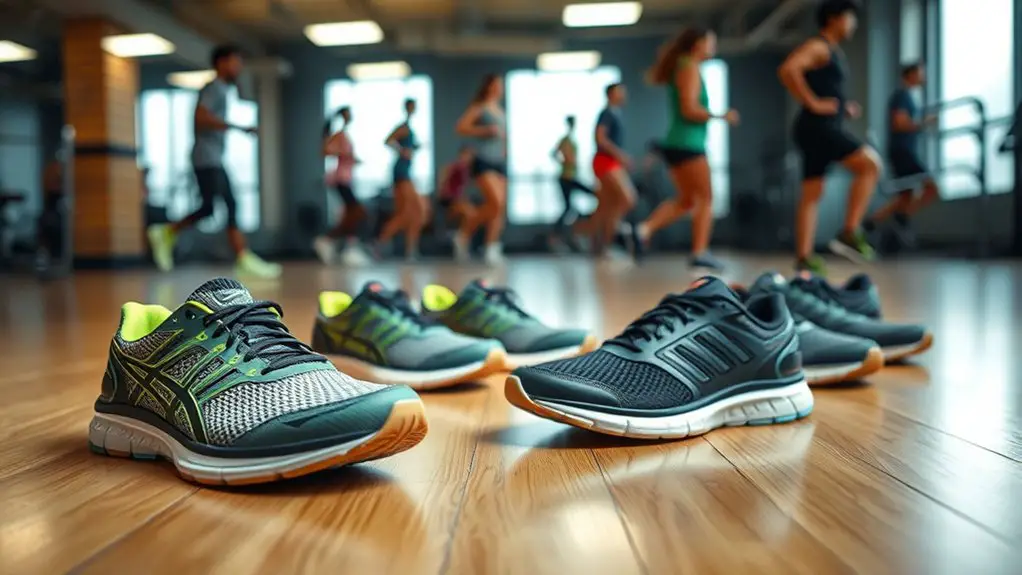
Choosing the right shoes for high-intensity interval training (HIIT) can greatly impact your performance and reduce the risk of injuries. The right HIIT footwear provides stability, flexibility, and traction, essential for various movements in your workouts. Here are three recommended options:
- Nike Metcon: Known for its durability and stability, this shoe offers excellent support during heavy lifts and explosive movements.
- Reebok Nano: This versatile shoe features a wide toe box and a flexible sole, perfect for dynamic workouts and agility exercises.
- Adidas Ultraboost: With its responsive cushioning and supportive fit, it’s ideal for high-impact training while promoting injury prevention.
Selecting the appropriate shoes for your HIIT sessions is vital. Prioritize HIIT footwear that enhances your performance and minimizes injury risk, ensuring that you can train effectively and safely.
Importance of Arch Support and Cushioning
When it comes to preventing injuries during workouts, arch support and cushioning are critical components that shouldn’t be overlooked. Proper arch support stabilizes your foot, aligning it correctly, which reduces strain on your ligaments and tendons. Without adequate support, you risk overpronation, leading to common injuries like plantar fasciitis or shin splints.
Cushioning, on the other hand, absorbs impact during high-impact activities, minimizing stress on your joints. It’s essential to choose shoes that provide a balance between support and cushioning tailored to your specific needs.
If you’re engaging in high-intensity workouts, the right combination can enhance your performance while prioritizing injury prevention. Remember, the shoes you wear can make a significant difference in how your body responds to the demands of your routine. Investing in quality gym shoes with ideal arch support and cushioning isn’t just a choice; it’s a necessity for safeguarding your health during exercise.
How to Choose the Right Size and Fit
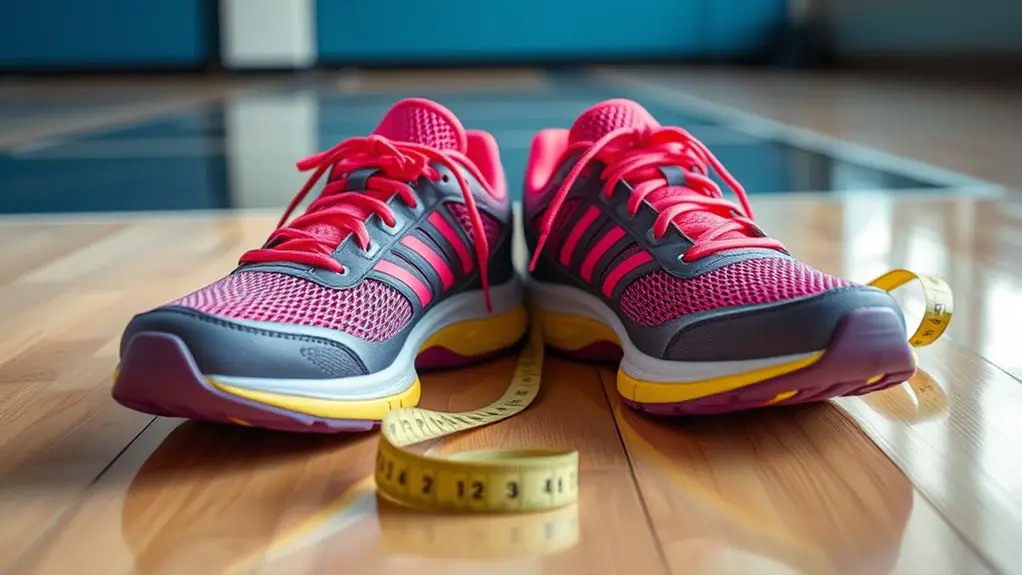
Finding the right size and fit for your gym shoes is crucial, as even slight discrepancies can lead to discomfort or injury. To choose the perfect pair, consider these shoe measurement techniques and foot shape considerations:
- Measure Your Feet: Always measure both feet, as they can vary in size. Stand on a flat surface and trace each foot, measuring the length and width.
- Consider Foot Shape: Recognize whether you have a narrow, wide, or average foot. Different brands cater to various shapes, so don’t hesitate to try on multiple styles.
- Try Before You Buy: Always test the shoes with the socks you intend to wear. Walk around to verify there’s enough room in the toe box and that the heel feels secure.
Maintenance Tips for Your Gym Shoes
Maintaining your gym shoes is essential for maximizing their lifespan and guaranteeing they continue to protect your feet effectively. Start by implementing proper cleaning techniques; regularly remove dirt and debris with a soft brush or damp cloth. For a deeper clean, use a mixture of mild soap and water, avoiding harsh chemicals that can damage materials.
Dry your shoes naturally, away from direct heat sources, to prevent warping. Additionally, consider rotating between pairs to reduce wear and tear on a single pair, considerably extending their shoe lifespan. Pay attention to the soles; inspect for signs of excessive wear and replace them when necessary. Finally, store your shoes in a cool, dry place to maintain their shape and integrity. By following these maintenance tips, you’ll guarantee your gym shoes provide peak support and performance for many workouts to come.
Customer Reviews and Recommendations
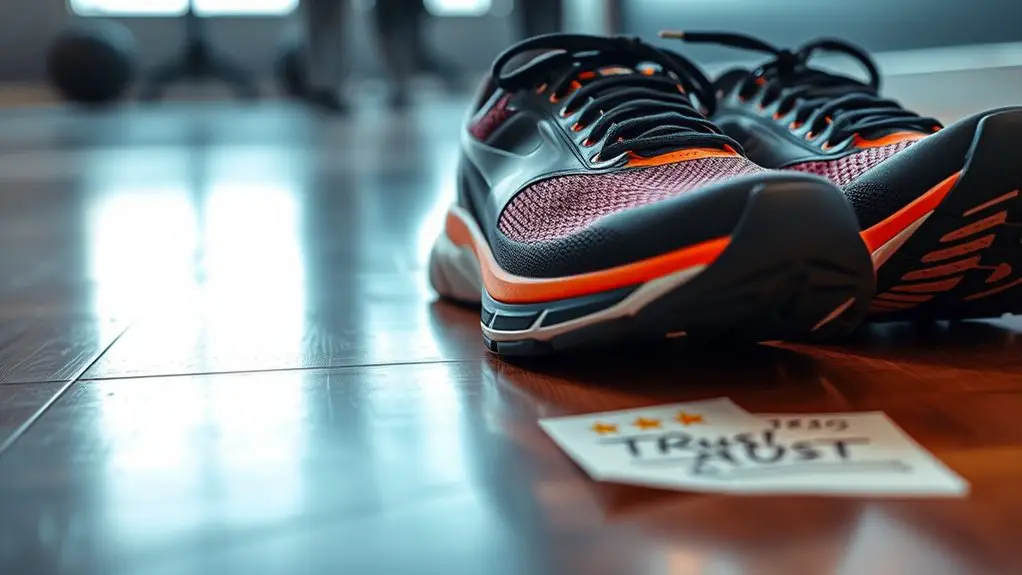
Customer reviews and recommendations can be invaluable resources when selecting the best gym shoes for injury prevention. By evaluating customer experiences, you can gain insights into how different shoes perform in real-world conditions. Here are three key aspects to take into account:
- Shoe Durability: Many reviews highlight how certain shoes withstand rigorous workouts over time, which is essential for long-term injury prevention.
- Comfort and Fit: Customers often emphasize the importance of a proper fit, as discomfort can lead to misalignment and injuries.
- Traction and Support: Look for feedback on traction and support levels, as these features greatly impact stability during exercises.
Frequently Asked Questions
Can I Wear the Same Shoes for Different Types of Workouts?
Yes, you can wear the same shoes for different workouts. Cross training benefits include enhanced workout versatility, but make certain your shoes provide adequate support and cushioning for diverse activities to prevent discomfort or injury during exercises.
How Often Should I Replace My Gym Shoes?
Like a well-timed performance, your gym shoes need attention. Generally, replace them every 300-500 miles or every 6-12 months, depending on your training frequency. A shoe’s lifespan directly impacts your performance and injury risk.
Do Expensive Shoes Guarantee Better Injury Prevention?
Expensive shoes don’t guarantee better injury prevention. While advanced shoe technology may enhance comfort, injury research shows proper fit and support are essential. Prioritize these factors over price to effectively reduce injury risk during workouts.
Are There Specific Shoes for Flat or High Arches?
Yes, there are specific shoes designed for flat or high arches. You’ll need options with adequate arch support and cushioning to guarantee proper alignment and comfort, reducing the risk of injuries during your workouts.
Can I Use Running Shoes for Weightlifting?
You might think running shoes are versatile, but their cushioning can hinder stability needed for weightlifting. Weightlifting shoes provide a solid base and better power transfer, enhancing your performance. Consider using specialized footwear for best results.
